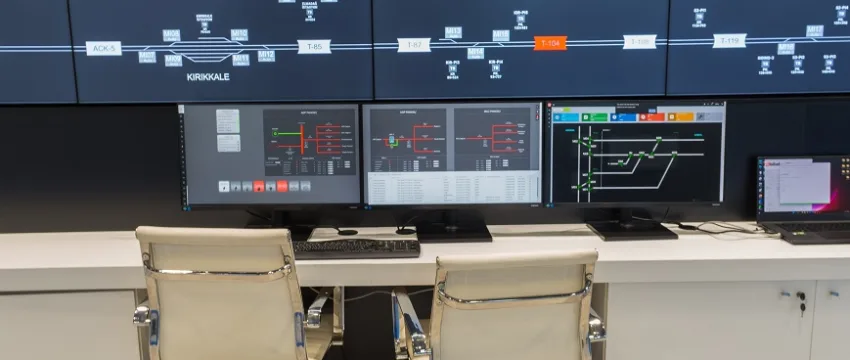Rail Traffic Management System (RTMS) is designed to support managing the inherent complexity of rail services and rail networks by providing an integrated and holistic view of operational performance, enabling rail operational staff to better balance the sometimes-competing demands of aspects such as track access and train crew resources when taking decisions.
Rail Traffic Management Systems support railway operations processes and procedures, and are systems based on the concept of a single, integrated and consistent set of operational data, enabling high levels of rail operations efficiency.
Prepare operation plans of trains in a long term with efficiency:
- Train Timetables
- Rolling Stock Schedules
- Crew Schedules
RTMS Main Modes
Manual mode (stand-alone mode) -
In this mode, train schedules are retrieved from system’s database: Display management handled by operators.
Semi-Automatic mode -
In this mode train schedules are still retrieved from the system’s database, but display management is handled both automatically by the system (on time basis, with the time-out parameters) and manually by operators.
Automatic mode (Driven mode) (external GTFS feed) -
In this mode train schedules are again retrieved from system’s database, but real-time data are updated on the basis of data received from external systems.
All working modes allow storing a local copy of the timetable in the system’s database. In addition, all modes allow handling real-time events that is visualization of messages on display.


 Optimize rail operations with our Rail Traffic Management System—enhancing safety, efficiency, and reliability on every journey.
Optimize rail operations with our Rail Traffic Management System—enhancing safety, efficiency, and reliability on every journey.